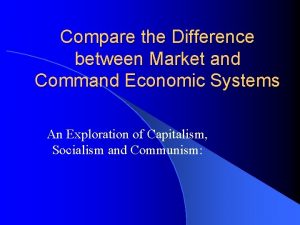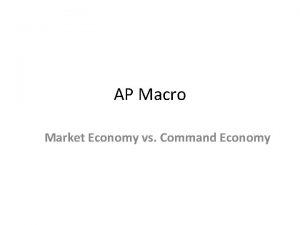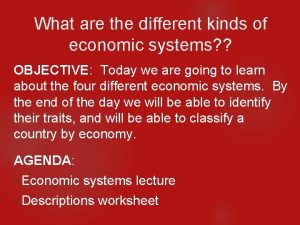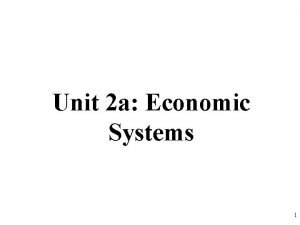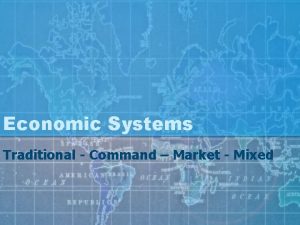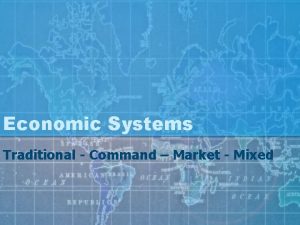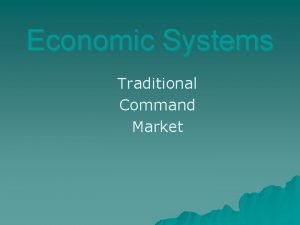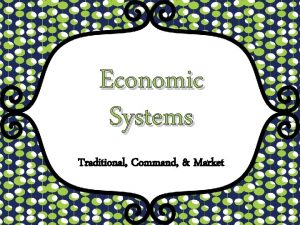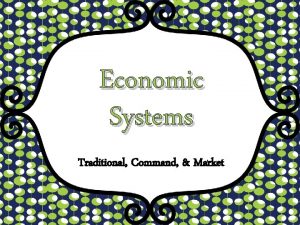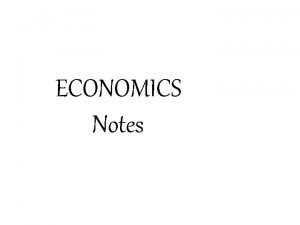THREE ECONOMIC SYSTEMS Traditional Command Market TRADITIONAL ECONOMY







- Slides: 7

THREE ECONOMIC SYSTEMS Traditional Command Market

TRADITIONAL ECONOMY What to produce? What people need to survive How to produce it? Hunting, farming, & gathering (social roles determine who does what) For whom to produce? Make their own products (what they have always made)

Characteristics of Traditional �Found in rural, non-developed countries (some parts of Asia, South America, and Africa) �Customs govern the economic decisions �Technology not used �Farming, hunting, and gathering are done the same way as the generation before �Activities are centered toward the family or ethnic unit �Men and women have different economic roles and tasks

COMMAND ECONOMY �What to produce? Whatever the government decides �How to produce it? However the government decides �For whom to produce? Class reward system Waiting in line / rations

Characteristics of Command � Government or other central authority makes decisions about and determines how natural, capital, and human resources will be used. � Change can occur easily, because its government driven � Little individual freedom � No competition between businesses � Business are not run to create a profit � Consumers have few choices in the market � Factories are concerned about meeting quotas (not profit) � Shortages often occur because of poorly run factories and farms � Government determines your job � Government sets the price of goods and services

MARKET ECONOMY �What to produce? �How to produce it? What people want to buy and sell Supply and demand �For whom to produce? Determined by how much someone is willing to pay for it

Characteristics of Market � Resources (capital and natural) are owned by individuals � Economic decisions are made by individuals competing to earn a profit � Individual freedom is considered very important � Based on supply and demand (if people are willing to buy it, then businesses will make it) � Profit is the motive for increased work rather than quotas � Competition between businesses � Many economic freedoms and choice in the market place � Competition determines prices which increase the quality of the product (you want to make the best and most inexpensive product, so consumers will buy your product instead of your competitor’s product) � No government intervention in the economy � ALSO CALLED CAPITALIST ECONOMY
